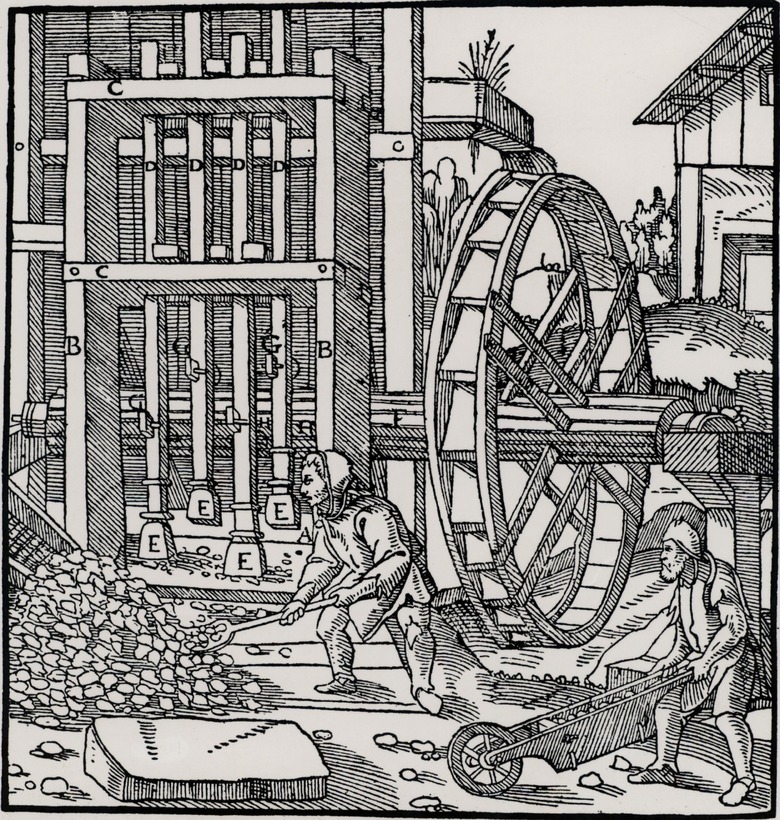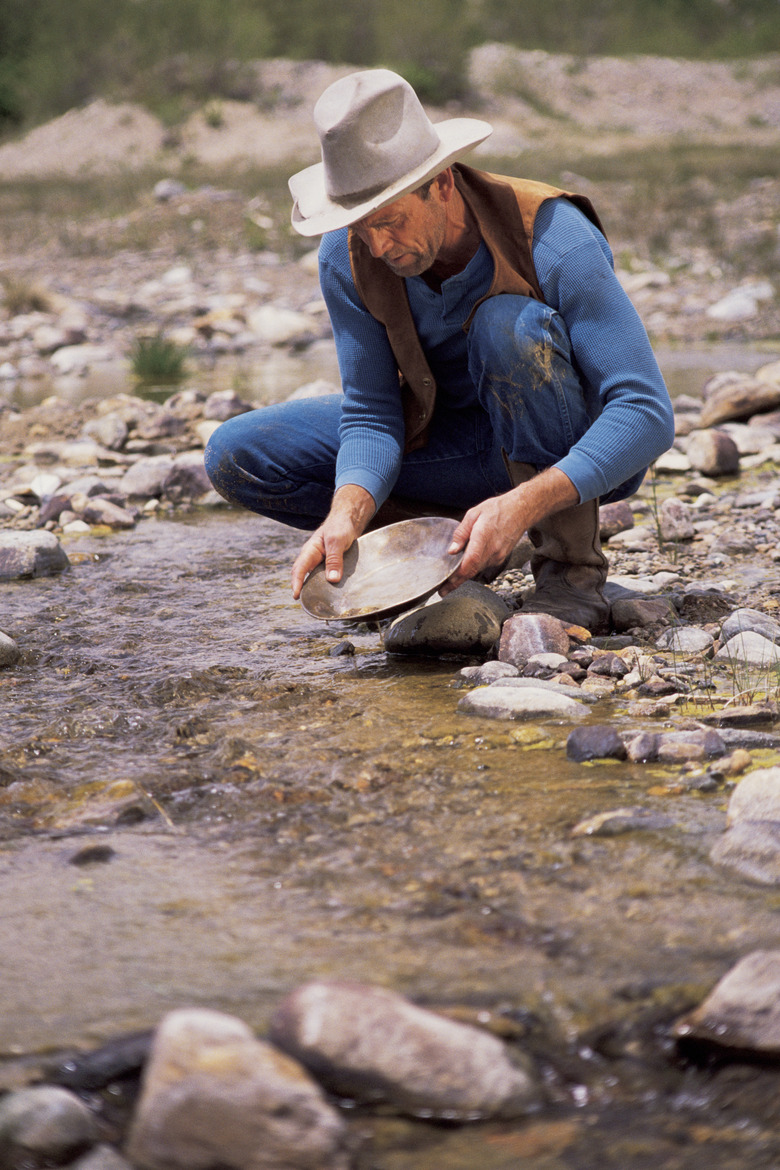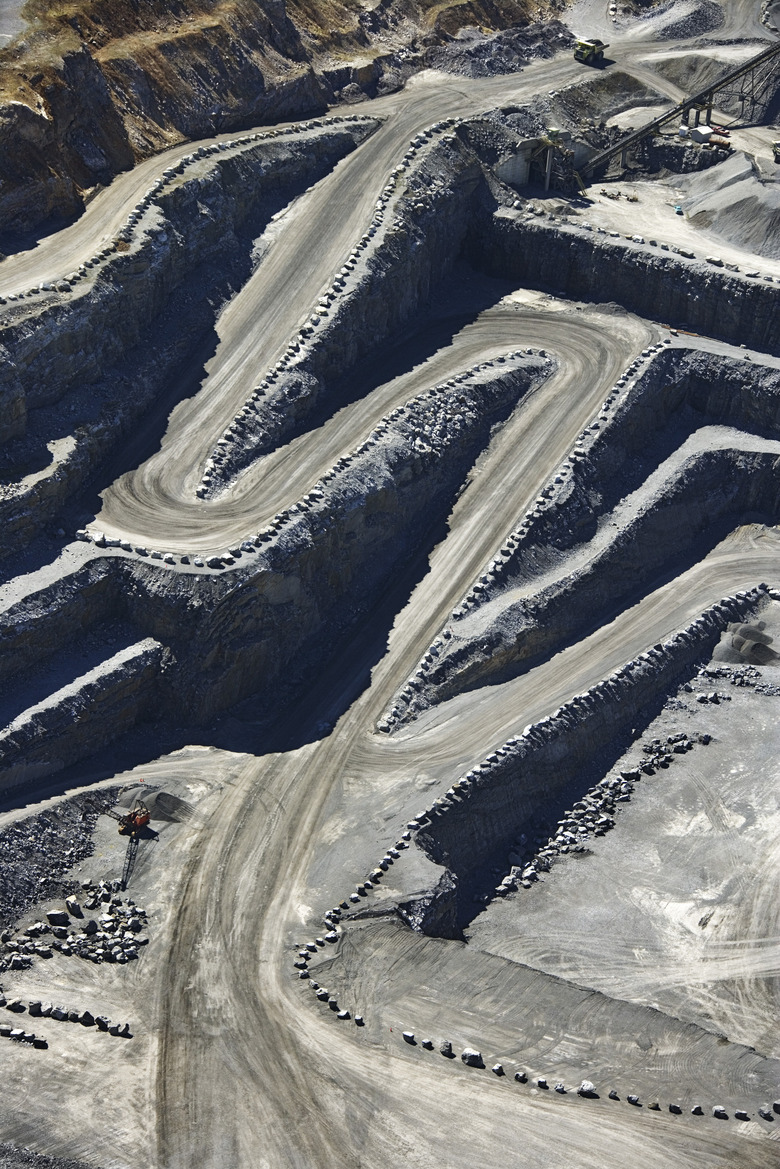What Are The Different Ways That Minerals Can Be Mined?
Mining is the process of mineral extraction from an ore or rock seam. The minerals can range from precious metals and iron to gemstones and quartz. In ancient times, miners recognized a mineral rock formation from its outcrop at the surface. Modern mining technology uses geophysical techniques that involve measuring the magnetic, gravity and sonic responses of rocks above and around a prospective mineral ore body.
Open Pit
Open Pit
Surface or opencast mining is the easiest way to produce a mineral ore when the deposits of economically valuable minerals lie close to the surface. Miners first remove the vegetation and soil cover above a mineral body. They remove further rock cover with explosives that create an open pit. Quarries are open-pit mines that produce building materials. Exhausted open-pit mines often become landfill sites for waste disposal.
Placer
Placer
Placer mining is a form of open-pit mining of minerals from alluvial deposits, such as sands and gravels in existing or ancient rivers and streams. It is a common mining technique for gemstones and precious metals such as gold. Panning is the simplest method of placer mining where gold particles and gems settle to the bottom of a pan because they are denser and heavier than the sand and gravel.
Strip
Strip
Strip mining is a variation of surface mining for thin but extensive mineral layers close to the surface with layers of soil or rock above them. Bulldozers scrape and remove layers of soil and vegetation. Explosives break up the rock overburden and enable access to mineral ore. Coal, iron, and tar sands are mined this way.
Underground
Underground
Underground mining starts by following a surface outcrop of mineral ore as it slopes into the ground. The ore could be just 20 feet below the surface. Shaft mines are the deepest underground mines. South African gold mines are 12,000 feet underground. Access to underground mines is usually via a sloping or vertical shaft with an elevator mechanism. Miners extract the ore from seams extending horizontally from the shaft. Explosives break up the mineral ore rock and are removed by machinery to the shaft. Ventilation is necessary in deep mines for the removal of toxic gases and cooling. Temperatures below ground can reach over 100 degrees F.
Fluid
Fluid
Sulfur is mined by first drilling a borehole and pumping water through pipes installed inside it. Water pumped through the pipe dissolves the sulfur and is pumped back to the surface. Sulfur is extracted after evaporation of the water. This type of mining can contaminate water supplies as the boreholes pull in groundwater from surrounding areas.
Marine
Marine
Bucket dredgers sweep up and collect minerals from the sea floor. This method has been used to mine manganese nodules since the 1970s. The rock nodules also contain copper, cobalt and nickel.
Cite This Article
MLA
Kielmas, Maria. "What Are The Different Ways That Minerals Can Be Mined?" sciencing.com, https://www.sciencing.com/info-10006980-different-ways-minerals-can-mined/. 9 January 2018.
APA
Kielmas, Maria. (2018, January 9). What Are The Different Ways That Minerals Can Be Mined?. sciencing.com. Retrieved from https://www.sciencing.com/info-10006980-different-ways-minerals-can-mined/
Chicago
Kielmas, Maria. What Are The Different Ways That Minerals Can Be Mined? last modified March 24, 2022. https://www.sciencing.com/info-10006980-different-ways-minerals-can-mined/


